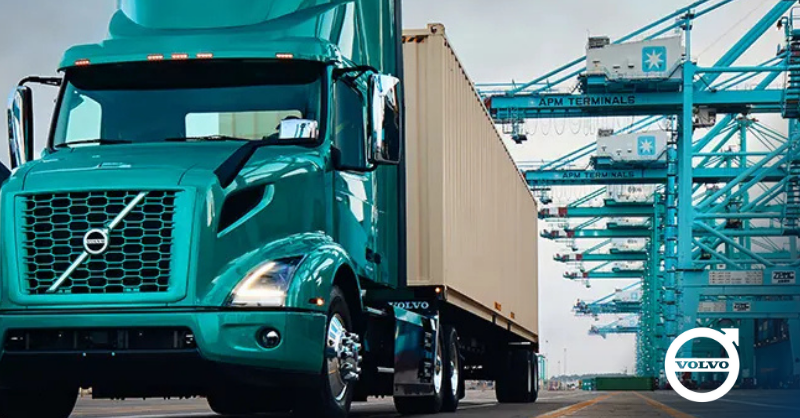What is a Pricing Engine and Why Do You Need One?
In today’s volatile B2B climate, pricing strategies have become vital to remaining competitive and maximizing profitability. As more and more companies fight to earn new business, the need for efficient and effective pricing mechanisms has never been more apparent.
This is where the concept of a pricing engine comes into play, offering a powerful solution to streamline and optimize pricing processes.
What Is a Pricing Engine?
A pricing engine is an advanced software solution that automates and optimizes the process of generating and maintaining pricing strategies. It takes various inputs, such as market trends, competitor pricing, customer behavior, and internal costs, and converts them into actionable and market-responsive pricing recommendations.
The true power of a pricing engine lies in its ability to handle complexity and adapt to dynamic market conditions. Unlike manual pricing processes, a pricing engine leverages advanced algorithms and data analysis to monitor and analyze real-time data continuously. This allows businesses to proactively respond to market shifts, competitor moves, and changes in customer demand, ensuring they stay ahead of the curve and capitalize on emerging opportunities.
By automating complex calculations, considering multiple variables, and incorporating intricate controls and constraints, a pricing engine empowers businesses to tailor their pricing strategies to specific market segments, product lines, or customer profiles. This flexibility enables personalized and targeted pricing approaches, optimizing profitability while maintaining a competitive edge in their respective industries.
How Does a Pricing Engine Software Work?
Pricing engine software (sometimes referred to as price advantage software) works by leveraging algorithms and data analysis to streamline the process of determining optimal prices for products or services. Here’s a breakdown of how it typically operates:
- Data Ingestion: The pricing engine ingests data from various sources, including internal data such as costs, inventory levels, and sales history, as well as external data like market trends, competitor pricing, and customer behavior patterns. This data serves as the foundation for price calculations.
- Rule Configuration: Businesses can configure pricing rules and constraints within the pricing engine based on their specific pricing strategy, objectives, and industry requirements. These rules can focus on product categories, customer segments, geographic regions, and promotional periods.
- Price Optimization: Using machine learning, artificial intelligence, and predictive analytics, the pricing engine analyzes the ingested data and configures rules to determine the optimal prices that maximize profitability while maintaining competitiveness. It considers variables like price elasticity, demand forecasting, and willingness-to-pay analysis.
- Dynamic Pricing: Many pricing engines offer dynamic pricing capabilities, which allow for real-time price adjustments based on changing market conditions, inventory levels, or customer behavior. This ensures that prices remain responsive and competitive at all times.
- Integration and Automation: Pricing engines can integrate with various systems, such as e-commerce platforms, enterprise resource planning (ERP) systems, and customer relationship management (CRM) software. This integration enables the automated application of optimized prices across multiple sales channels, ensuring consistency and accuracy.
- Analytics and Reporting: Pricing engines typically provide robust analytics and reporting capabilities, allowing businesses to track pricing performance, identify trends, and gain insights into customer behavior and market dynamics. This data-driven approach enables continuous revenue optimization and informed decision-making.
- Approval Workflows: Depending on the business’s requirements, pricing engines may include approval workflows for price changes, ensuring that pricing decisions align with organizational policies and governance structures.
By automating the pricing process and leveraging advanced analytics, pricing engine software empowers businesses to thrive amidst the rapidly shifting B2B terrain.
Features of the Best Pricing Engines
The most effective pricing engines offer a comprehensive suite of features designed to streamline and optimize pricing processes across various business functions. Here are some key features that characterize the best pricing engines:
1. Price Management and Cascading
Top-tier pricing engines provide robust price management capabilities, allowing businesses to establish and cascade prices across different levels of their organization. This includes setting high-level starting prices and cascading them down to specific regions, countries, or even individual customers. Vendavo’s Pricepoint is an example of pricing software that excels in managing prices along the price waterfall, enabling businesses to adjust prices based on geographic or market-specific factors.
2. Granular Price Optimization
Advanced pricing engines offer granular, AI-backed price optimization features that account for customer-specific factors, such as customer characteristics, product offerings, and perceived value. Vendavo’s Deal Price Optimizer is a prime example of price optimization software that provides highly granular target price guidance for negotiations, ensuring that businesses can offer prices that align with the customer’s willingness to pay and the value they place on products or services.
3. Rebate and Incentive Management
Effective pricing engines often incorporate rebate and incentive management capabilities, recognizing that these programs can significantly impact pricing strategies. Solutions like Vendavo’s Rebate and Channel Manager enable businesses to design, execute, and measure rebate and incentive programs across their product portfolios, customer segments, and markets. By integrating rebate and incentive management into the pricing engine, businesses can ensure that their pricing strategies accurately reflect these adjustments.
4. Intelligent Configure, Price, Quote (CPQ) Integration
The best pricing engines seamlessly integrate with Configure, Price, Quote (CPQ) systems, ensuring that the optimized pricing strategies are readily available to sales teams and sales channels. Vendavo’s Intelligent CPQ solution exemplifies this integration, allowing businesses to leverage the insights and recommendations from their pricing engines to drive faster, more profitable sales, and enhance the overall customer experience.
5. Real-time Market and Competitor Data Integration
Top-performing pricing engines can integrate real-time market and competitor data, enabling businesses to respond quickly to changes in the competitive landscape. By continuously monitoring and analyzing external factors, such dynamic pricing software can provide adaptable and up-to-date pricing recommendations.
6. Advanced Analytics and Reporting
Robust pricing engines offer advanced analytics and reporting capabilities, allowing businesses to gain valuable insights into pricing performance, customer behavior, and market dynamics. These insights can inform data-driven decision-making and enable continuous optimization of pricing strategies.
Industries That Can Use Pricing Engines
Pricing engines are versatile tools that can benefit a wide range of industries focused on maximizing profitability and optimizing pricing strategies.
Some of the key industries that can leverage pricing engines include:
- Manufacturing
- Distribution and Wholesale
- Retail and E-commerce
- Automotive
- Technology and Software
- Telecommunications
- Energy and Utilities
- Transportation and Logistics
- Hospitality and Travel
- Healthcare
- Financial Services
- Pharmaceuticals
- Agriculture
- Construction
- Mining
Essentially, any industry where pricing plays a critical role in profitability and competitiveness can benefit from the implementation of a robust pricing engine solution.
Benefits of Using a Pricing Engine
Implementing a pricing engine can give businesses numerous advantages, from improving their sales cycles to boosting profits. Here are some key benefits of using a pricing engine:
- Error Reduction: Pricing engines automate pricing calculations, reducing the risk of human errors and ensuring consistent and accurate pricing across all products, services, and customer segments.
- Improved Personalized Customer Experience: By leveraging customer data and preferences, pricing engines can offer personalized pricing tailored to individual customers, enhancing their overall experience and satisfaction.
- Increased Profits: Through advanced pricing analytics and optimization algorithms, pricing engines help businesses identify the most profitable pricing strategies, maximizing revenue and profitability.
- Accelerated Sales Cycles: With streamlined pricing processes and real-time pricing recommendations, sales teams can quote and negotiate more efficiently, shortening sales cycles and improving time-to-market.
- Enhanced Profit Margins: Pricing engines enable businesses to maintain optimal profit margins by considering various factors such as costs, market conditions, and customer willingness to pay.
- Real-time Responsiveness: Pricing engines can quickly adapt to changing market conditions, competitor pricing, and customer demand, allowing businesses to respond in real-time and maintain a competitive edge.
- Data-Driven Decisions: By leveraging historical data, market trends, and customer behavior analysis, pricing engines provide data-driven insights to support informed pricing decisions.
- Operational Efficiency: Automating pricing processes and eliminating manual tasks significantly improves operational efficiency, freeing up resources for other critical business activities.
- Efficient Inventory Management: Pricing engines can help optimize inventory levels by adjusting prices based on supply and demand, reducing the risk of overstocking or stockouts.
- Customer Satisfaction: By offering competitive pricing, businesses can enhance customer satisfaction, foster loyalty, and improve overall customer retention rates.
Deploying a pricing engine empowers businesses to streamline many aspects of their pricing and sales operations, ultimately driving greater profitability, operational efficiency, and customer relationships.
Pricing Advantage Software vs Pricing Engine Software
While both pricing advantage software and pricing engine software are designed to optimize pricing strategies, there is a distinct difference between the two:
Pricing Advantage Software
Pricing advantage software is a broad category encompassing various tools and solutions aimed at providing businesses with a competitive edge in pricing. These solutions may include analytics tools, market intelligence platforms, and pricing optimization models. The primary focus of pricing advantage software is to gather and analyze data from multiple sources, such as market trends, competitor pricing, and customer behavior, to help businesses make informed pricing decisions.
Pricing Engine Software
On the other hand, a pricing engine is a specific type of software that automates the process of determining optimal prices for products or services. It is a rules-based system that factors in cost, demand, competition, and customer segmentation to calculate and recommend the most profitable pricing strategies.
The key distinction lies in the level of automation and real-time pricing capabilities. While pricing advantage software provides insights and recommendations, a pricing engine goes a step further by dynamically adjusting prices based on predefined rules and algorithms. Pricing engines are also designed to integrate with other systems, such as e-commerce platforms, ERP systems, and CRM software, enabling real-time price updates across multiple sales channels.
Leverage AI to Identify Pricing and Inventory Opportunities
By integrating AI algorithms, pricing engines can identify patterns and insights from vast amounts of data, enabling businesses to uncover pricing and inventory opportunities that may have been overlooked through traditional methods.
AI-powered pricing engines can analyze historical sales data, customer behavior, market trends, and competitor strategies to provide highly accurate demand forecasting and pricing recommendations. Additionally, AI can help optimize inventory levels by predicting demand fluctuations and suggesting dynamic pricing adjustments to manage stock levels effectively.
Integrating Your Business’s Pricing Engine
To fully leverage the power of pricing engines for your business, you can partner with Vendavo, a leading provider of CPQ and pricing solutions. Vendavo offers a comprehensive suite of pricing engine software, including Vendavo Pricepoint, Deal Price Optimizer, Rebate and Channel Manager, and Intelligent CPQ.
With Vendavo’s expertise and cutting-edge pricing engine solutions, businesses can streamline pricing processes, optimize profitability, and gain a competitive edge through advanced analytics, machine learning, AI capabilities, real-time pricing recommendations, and seamless integration with existing systems.



